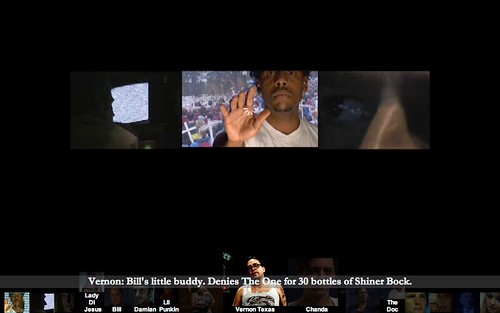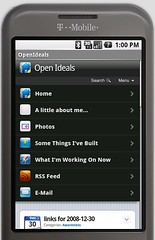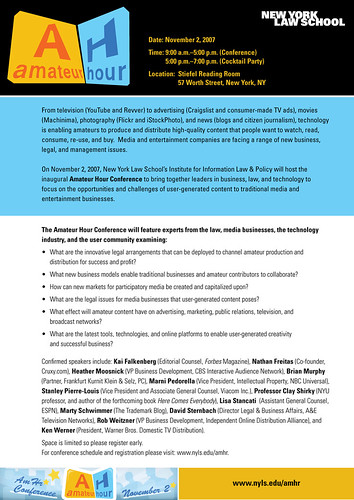On November 11th, The Grand Inquisitor, a new web mini-series, launched on Newsdate2011.com. Based on a chapter from the classic novel “The Brothers Karamazov”, THE GRAND INQUISITOR is a five part film updating Dostoevsky’s mystical fable to a future, Fox network style reality. Cruxy is proud to be an Executive Producer of this work. The series, originally envisioned as a traditional short film, went through a re-imagination process that resulted in what I feel is groundbreaking in its approach to online distribution. It also doesn’t hurt that an amazing cast and crew are involved including Director/Actor Tony Torn, writer Ruth Margraff, multi-image designer Julie Talen, Paul D. Miller aka DJ Spooky, and Sonic Youth’s Thurston Moore.
I decided to write up a bit more on our approach to the online distribution strategy we helped create. I know there are many filmmakers out there sitting at that digital fork in the road, trying to figure out what’s possibly beyond “upload it to YouTube!”. This post will show what its like to go the road less travelled…
Episodes vs. Short
We all love film. We all want to sit in big dark theaters with all our friends, and see our masterpiece up on the screen. While many shorts may have success getting into festivals, and a few even might win Oscars, many don’t ever get seen by more than just a handful of people. With this piece, we decided that it could work with a more “net native” approach… edited into multiple short episodes (3-5 minutes), unfolding over a few weeks, distributed through multiple online video services. Without anything more than a few well timed email announcements and a twitter message here and there, we’ve already had thousands of people watch the trailer, viral ads, and first episode. It may not be physically communal, it may not be in a dark theater with popcorn, but its real – actual people watching, enjoying, experiencing this work. Our goal is to get to 100,000 viewers.
Hyperlinked Entertainment
Let’s be honest – this a very complex work. It’s based on freaking Dostoevsky. Even more, its a parody of contemporary politics and corporate media, and its set in the future. I love it, but I am a total geek, and I have the benefit of having read the script. For the wider audience, we wanted to balance the ambition of this work by creating a new kind of “hyperlinked entertainment” experience. You’ll see that on each episode, the complete cast of characters is represented below the main video stream as small thumbnails. As the characters appears on the screen, their thumbnail lights up. You can roll over the thumbnails to zoom in on them, and learn a bit more about their role in this tale.
Here’s an example of the “character dock” – a bit like the MacOS application dock:

As the series progresses, we’ll also provide clickthrough links, subplots, and the ability to “friend” the different characters. The dream is to at some point to create a “down the rabbit hole” experience that allows you to experience the film and story in a non-linear way through media and plot lines scattered across many sites. Why shouldn’t a scene occur on MySpace? Perhaps you should be able to track the sightings of Jesus through Twitter and Google Maps? This is where entertainment is headed in the 21st century – mixed reality, hyperlinked entertainment….cyberspace inverted.
Here’s a full view of the entire episode one player:

Podcasting
By breaking up the film into a set of episodic releases, you can better distribute them through podcasting technology to iPods and other devices. Sites such as Blip.tv and Feedburner make it easy to setup your podcast feeds and get them submitted to the iTunes Podcast Directory and elsewhere.
The point here is less that a huge percentage of your viewers will subscribe to a podcast, but more that you can use this to get your work listed in iTunes directory. That way you can tell people to find and download the episodes using iTunes right to their iPod, iPhone or AppleTV.
High-Def Online
This work was originally shot on the Panasonic P2 HD cameras. Reducing it down to a DVD release wouldn’t do justice to the scale and depth of the original work. Web video has quickly moved from being terribly low-resolution and choppy, to a thing of beauty. In fact, the number one “HD” display that people are exposed to on a daily basis is their computer screen. New compression standards such as H264, Apple’s Quicktime, DivX and cheap bandwidth has put the distribution of HD video online within the reach of even the smallest budget indies.
We also have big plans for distributing the HD episodes through popular Bit Torrent tracking sites. Many of the sites are looking to go legit, and are excited to have quality, legal HD video to promote.
Flash Video
It’s the video technology we all hated, but have learned to love. Flash provides the most superior user experience, with seamless in page playback that just works. Adobe has continued to innovate, providing higher quality codec support in Flash 8 and 9 through their partnership with ON2. Customizable, open-source Flash video players from brilliant people like Jeroen Wijering have also made this possible.
Social promotion
Perhaps you saw our “Audition 2 Be Jesus” video? If not, you can view it on YouTube at http://youtube.com/newsdate2011. It was definitely controversial, with many people believing we were “making fun of Christians”. As they say, there is no such thing as bad publicity. While we were not intending to insult anyones religious beliefs, anytime you create a creative piece involving religion or politics, you have to expect there will be misinterpretations.

Domain Branding
Instead of choosing a domain such as thegrandinquisitor.com which is long and hard to spell, we picked out an intriguing aspect to the film – that its set in the near future, the year 2011. The fictional news program in the series opens with “Newsdate 11-11-2011″, and from that we selected Newsdate2011.com as the domain. Its memorable and short.
Online Everywhere
Facebook, MySpace, Blip, Stage6, Cruxy, YouTube, Veoh…. we would have done more if we had the time. The more sites you can have a presence on the better. Each of these services has their own unique value and audience, and its opportunity to create a presence on each that makes sense and represents your work well.
Just some of the possibilities…
These are just some of the avenues of online distribution and promotion that we explored. In the end, our goal was take the static, linear medium of a traditional “short film” and move it into an evoling, engaging online experience. We believe this will result in 1) more people seeing the work, 2) more people talking about and 3) the possible development of a new creative form that mixes film and hyperlinked online media.
In the end, no amount of clever code will save a bad film. With a good work, however, it can become much bigger than the sum of its parts.
Please visit Newsdate2011.com today to check out the series.






